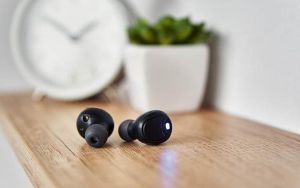
Stepping into the world of 3D printing is exciting! The possibilities seem endless – from crafting custom prototypes and functional parts to printing intricate artistic creations. But before you can bring your digital designs to life, you need a 3D printer. And just as important as the printer itself is understanding the 3D printer filament you plan to use.
For newcomers, the array of 3D printer filament types can be overwhelming. PLA, ABS, PETG, TPU, Nylon, PC, composites… the list goes on! Each material has unique properties, requiring different printing temperatures, speeds, and even different types of 3D printer hardware to print successfully. Choosing a 3D printer that aligns with the materials you want to print is perhaps the most critical decision you’ll make at the outset. Buying a printer ill-suited for your desired 3D printer filament can lead to frustrating failures and wasted material.
Let’s break down how your filament aspirations should guide your 3D printer selection, starting with the most common beginner material.
Starting Simple: PLA and the Entry-Level 3D Printer
For most beginners, Polylactic Acid (PLA) is the go-to 3D printer filament. It’s derived from renewable resources like cornstarch or sugarcane, is easy to print, requires relatively low temperatures, and doesn’t produce strong odors. Prints beautifully in most conditions and is ideal for learning the ropes.
Almost any FDM (Fused Deposition Modeling) 3D printer on the market today can print PLA straight out of the box. These entry-level printers typically feature an open frame design and a basic hotend (the part that melts the filament). While a heated print bed is beneficial for better adhesion, it’s not strictly necessary for small PLA prints, although it significantly improves success rates, especially for larger objects. If your primary goal is to print easy, aesthetic objects or simple prototypes using PLA, a standard, well-regarded entry-level 3D printer will be more than sufficient. Look for printers known for reliability and ease of setup.
Stepping Up: PETG, ABS, and the Need for More Capability
Once you’ve mastered PLA, you might want to explore filaments like PETG (Polyethylene Terephthalate Glycol) or ABS (Acrylonitrile Butadiene Styrene). PETG is known for its strength and durability, offering properties between PLA and ABS, while ABS is a robust, impact-resistant plastic widely used in manufacturing (like LEGO bricks).
Printing PETG successfully usually requires a heated bed, typically around 70-80°C, and slightly higher nozzle temperatures than PLA. Most modern mid-range 3D printers can handle PETG without issue, provided they have a heated bed and a hotend capable of reaching around 240°C.
ABS is trickier. It requires higher temperatures for both the nozzle (around 230-250°C) and the bed (around 90-110°C). More significantly, ABS is prone to warping and cracking due to temperature fluctuations and drafts. This is where the printer design becomes crucial. An enclosed 3D printer (or adding an enclosure to an open printer) is highly recommended, often necessary, to maintain a stable, warm environment around the print, preventing the material from cooling too quickly and shrinking unevenly. If ABS is a key material for your projects (e.g., functional parts needing higher heat resistance), prioritize a 3D printer with an enclosure or a strong community supporting add-on enclosures.
Exploring Advanced Materials: Flexibles, Nylon, and Composites
Diving into filaments like Thermoplastic Polyurethane (TPU) for flexible objects or Nylon for high-strength, durable parts introduces further requirements for your 3D printer.
Flexible filaments like TPU are elastic but can be challenging to feed through standard extruder systems (the mechanism that pushes the 3D printer filament into the hotend). They are prone to buckling or kinking if the path from the extruder gear to the hotend isn’t fully constrained. A direct drive extruder, where the extruder motor is located directly above the hotend, provides a shorter, more controlled filament path, making it much easier to print flexibles reliably. Bowden style extruders (where the motor is separate, pushing filament through a tube) can sometimes print flexibles, but it’s often more difficult and limited to stiffer TPU types. If flexible prints are a priority, a direct drive 3D printer is a strong advantage.
Nylon requires very high temperatures (nozzle often 250°C+), a heated bed, and is highly susceptible to moisture absorption. It also benefits significantly from an enclosure to prevent warping. For materials requiring temperatures above 250°C, an all-metal hotend is essential, as standard PTFE-lined hotends can degrade and release toxic fumes at such temperatures.
Furthermore, printing composite filaments like carbon fiber-filled or metal-filled PLA/PETG adds another layer of consideration. These materials contain hard particles that can quickly wear down standard brass nozzles. For abrasive filaments, a hardened steel nozzle is a mandatory upgrade to prevent rapid damage to your 3D printer.
Beyond FDM: SLA for Detail
While FDM printers use filament, it’s worth noting SLA (Stereolithography) printers use liquid resin. If your goal is extremely high detail and smooth surfaces for miniatures, jewelry, or intricate artistic pieces, an SLA printer might be the better choice, but this is a fundamentally different technology with its own set of material handling requirements (resins can be toxic and require post-processing).
Conclusion
Ultimately, your 3D printer should be chosen based on the types of objects you want to create and, consequently, the types of 3D printer filament you plan to use. Start by identifying your primary material goals. Are you sticking to easy PLA projects, or do you envision printing strong ABS parts, flexible prototypes, or durable Nylon components? Researching the requirements of that 3D printer filament will directly inform the features and capabilities you need in your 3D printer. By aligning your hardware choice with your material ambitions from day one, you’ll set yourself up for a much smoother, more successful, and enjoyable 3D printing journey.







